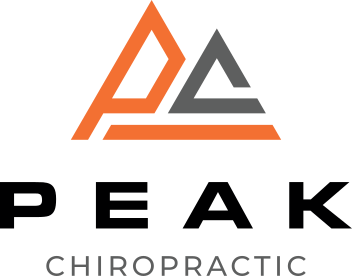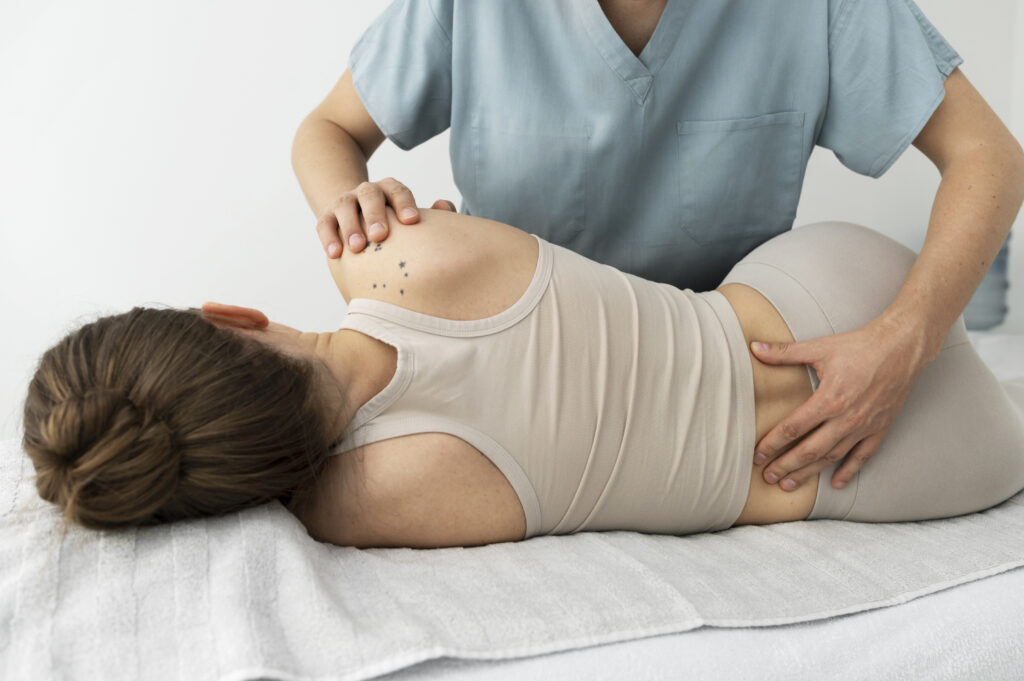In 2025, you'll find North Plains at the forefront of athletic injury treatments, combining innovative techniques to enhance recovery. You can expect a blend of cryotherapy, advanced physical therapy, and personalized rehabilitation programs designed specifically for athletes. With personalized approaches that incorporate cutting-edge technologies, you might wonder how these treatments could transform your recovery process. What's more, the integration of virtual reality and biomechanical assessments opens up new avenues for performance enhancement and injury prevention. The specifics of these methods could change the way you approach your training and recovery altogether.
Cryotherapy and Cold Therapy
When you're dealing with an athletic injury, cryotherapy and cold therapy can be game-changers. These methods help reduce inflammation, numb pain, and speed up recovery. You might be wondering how these therapies work and when to use them.
Cryotherapy involves exposing your body to extremely cold temperatures for a short period, usually in a specialized chamber. This process constricts blood vessels, which decreases swelling and inflammation. After the treatment, blood flow returns, bringing oxygen and nutrients to the injured area, promoting healing.
You'll likely feel invigorated afterward, which can boost your mood while aiding recovery.
Cold therapy, on the other hand, typically involves using ice packs or cold compresses directly on the injury. It's a straightforward, effective way to manage pain and swelling. Applying ice for 15-20 minutes every few hours during the first couple of days after an injury can notably minimize discomfort and help manage inflammation.
Always remember to wrap ice packs in a cloth to avoid frostbite.
Both therapies are particularly effective for acute injuries, such as sprains or strains. They're easy to incorporate into your recovery routine, whether you're an amateur athlete or a seasoned competitor.
Just keep in mind that while cryotherapy and cold therapy can work wonders, they shouldn't replace professional medical advice. Consult with a healthcare professional to verify you're using these treatments safely and effectively.
Regenerative Medicine Techniques
How do regenerative medicine techniques transform the recovery process for athletic injuries? These innovative approaches harness your body's natural healing mechanisms, enabling you to recover faster and more effectively.
By using substances like stem cells or platelet-rich plasma (PRP), regenerative medicine targets damaged tissues and promotes healing at a cellular level.
When you opt for treatments like PRP therapy, you're fundamentally giving your body a boost. PRP is derived from your own blood, concentrating the growth factors that stimulate tissue repair. It's particularly effective for tendon injuries, ligament sprains, and joint pain.
You'll notice that by promoting blood flow and reducing inflammation, these techniques can considerably shorten your downtime.
Another promising technique is stem cell therapy, which involves harvesting stem cells from your bone marrow or fat tissue. These cells can differentiate into various types of tissues, making them a powerful tool for repairing injuries.
This process not only enhances recovery but can also help regenerate damaged cartilage in joints, which is vital for athletes looking to return to peak performance.
Regenerative medicine techniques focus on treating the root cause of your injury rather than just alleviating symptoms. By addressing the underlying issues, you're more likely to experience a long-lasting recovery.
With these advanced treatments at your disposal, you can look forward to quicker rehabilitation and a smoother shift back to your favorite sport.
Embracing these techniques might just be your ticket to staying active and injury-free.
Advanced Physical Therapy
Building on the benefits of regenerative medicine, advanced physical therapy plays an essential role in your recovery journey from athletic injuries. This approach integrates evidence-based techniques tailored to your specific needs, ensuring you regain strength, flexibility, and function as efficiently as possible.
Advanced physical therapy focuses on various methodologies that can enhance your healing process. Here are four key components you can expect:
- Manual Therapy: Your therapist may use hands-on techniques to manipulate muscles and joints, relieving pain and restoring movement.
- Therapeutic Exercises: Customized exercise programs target your unique injury, promoting strength and endurance while reducing the risk of re-injury.
- Modalities: Techniques such as ultrasound, electrical stimulation, and heat therapy can help decrease inflammation and pain, aiding in quicker recovery.
- Education and Training: Your therapist will educate you on body mechanics and injury prevention strategies, empowering you to make informed choices about your training and daily activities.
Biomechanical Assessment
A thorough biomechanical assessment is essential for understanding the specific factors contributing to your athletic injury. By evaluating how your body moves and functions, professionals can pinpoint weaknesses or imbalances that may be causing pain or limiting your performance. This assessment typically involves a combination of motion analysis, strength testing, and flexibility evaluations.
During the assessment, you'll likely undergo several tests that examine your posture, gait, and overall body mechanics. For instance, you'll be asked to perform various movements while specialists observe your technique and alignment. They might use video analysis technology to capture your movements in detail, allowing for precise measurements and assessments. This data is invaluable in identifying malfunctioning movement patterns that could lead to injuries.
Once your biomechanical assessment is complete, you'll receive a tailored treatment plan that addresses your unique needs. This plan may include specific exercises to strengthen weak areas, stretches to improve flexibility, or modifications to your training regimen to prevent reinjury.
Additionally, understanding your biomechanics will help you make informed decisions about your footwear and equipment, further enhancing your performance and safety.
Ultimately, investing time in a biomechanical assessment can lead to faster recovery and improved athletic performance. By addressing the root causes of your injury, you'll be better equipped to return to your sport stronger and more resilient than before.
Don't underestimate the power of knowing how your body works—it's a vital step in your journey to recovery.
Electrical Stimulation Therapy
Electrical stimulation therapy can be a game changer for your recovery process.
It offers numerous benefits, such as pain relief and improved muscle function.
Let's explore how the treatment works and who can benefit the most from it.
Benefits of Electrical Stimulation
One of the most effective treatments for athletic injuries is electrical stimulation therapy, which offers numerous benefits for recovery.
You'll find that this therapy not only aids in healing but also enhances your overall performance. Here are some key advantages you can expect:
- Pain Relief: Electrical stimulation can greatly reduce pain by blocking pain signals and promoting the release of endorphins, giving you quick relief.
- Muscle Recovery: It helps in muscle relaxation and recovery. By stimulating your muscles, it encourages blood flow and speeds up the healing process.
- Reduced Swelling: This therapy can minimize inflammation and swelling, which is vital for athletes looking to return to their sport quickly.
- Improved Range of Motion: By alleviating pain and promoting relaxation, electrical stimulation can help restore your range of motion, allowing you to move more freely and effectively.
Incorporating electrical stimulation therapy into your recovery plan can make a considerable difference, helping you bounce back stronger and more agile than before.
Don't overlook this powerful tool in your athletic recovery arsenal!
Treatment Process Overview
Understanding the treatment process for electrical stimulation therapy can help you maximize its benefits during recovery. This therapy involves using electrical impulses to stimulate nerves and muscles, promoting healing and reducing pain.
When you arrive for your session, a healthcare professional will first assess your injury and determine the appropriate settings for your specific needs.
Next, they'll place adhesive electrodes on your skin near the affected area. These electrodes deliver electrical currents that mimic natural signals in your body. You may feel a tingling sensation, but it shouldn't be painful. The duration of each session typically lasts between 10 to 30 minutes, depending on your condition.
During the treatment, you'll be monitored closely to guarantee comfort and effectiveness. Afterward, your therapist may suggest additional exercises or stretches to complement the therapy, enhancing your overall recovery process. It's essential to communicate any discomfort or changes in your condition during treatment.
Regular sessions can markedly improve your healing time and help you regain strength. Following your therapist's recommendations will further optimize your recovery, allowing you to return to your athletic activities sooner and stronger.
Ideal Candidates for Therapy
Athletes recovering from injuries often make excellent candidates for electrical stimulation therapy. This treatment can help alleviate pain, reduce muscle spasms, and enhance recovery.
If you're considering this therapy, here are some ideal candidates:
- Recent Injury: If you've recently sustained a muscle or ligament injury, electrical stimulation can promote healing by improving blood flow to the affected area.
- Chronic Pain: Those suffering from ongoing pain, such as tendinitis or arthritis, may find relief through the targeted electrical impulses that stimulate nerve fibers.
- Post-Surgery Recovery: After surgical procedures, especially orthopedic surgeries, you might benefit from electrical stimulation to reduce swelling and accelerate healing.
- Athletes with Muscle Atrophy: If you're experiencing muscle atrophy due to inactivity or injury, this therapy can help stimulate muscle contractions, ultimately aiding in restoration and strength recovery.
Ultrasound Therapy
When it comes to treating athletic injuries, ultrasound therapy offers a range of benefits that can enhance your recovery.
This non-invasive procedure uses sound waves to promote healing in tissues, reducing pain and inflammation.
Let's take a closer look at how ultrasound therapy works and what you can expect during your treatment.
Benefits of Ultrasound Therapy
Ultrasound therapy offers several notable benefits for treating athletic injuries. If you're dealing with pain or discomfort, this non-invasive treatment can help you recover faster and get back to your sport.
Here are some key advantages you can expect:
- Pain Relief: Ultrasound therapy effectively reduces pain by increasing blood flow and promoting tissue healing, making your recovery process smoother.
- Reduced Inflammation: The gentle vibrations of ultrasound help decrease swelling and inflammation in the affected areas, allowing you to regain mobility more quickly.
- Improved Tissue Healing: This therapy accelerates the healing of soft tissues by stimulating cellular repair processes, which is especially beneficial for muscle strains or ligament injuries.
- Enhanced Flexibility: By promoting relaxation and reducing tension in the muscles, ultrasound therapy can improve your overall flexibility, helping you perform better in your sport.
Incorporating ultrasound therapy into your injury treatment plan can notably enhance your recovery experience.
Treatment Procedure Overview
The treatment procedure for ultrasound therapy is straightforward and designed to maximize your comfort and recovery. First, you'll meet with your therapist, who'll assess your injury and discuss your treatment goals.
After that, you'll lie down comfortably, and the therapist will apply a gel to the affected area. This gel helps transmit the sound waves effectively.
Next, the therapist will use a handheld ultrasound device, which emits high-frequency sound waves. As these waves penetrate your skin, they create heat and promote increased blood flow to the injured tissue. You might feel a gentle warmth during the treatment, but it shouldn't be painful.
The session typically lasts between 5 to 15 minutes, depending on the severity of your injury.
After the ultrasound therapy, your therapist may recommend follow-up treatments or complementary therapies, such as stretching or strengthening exercises, to enhance your recovery.
Sports Massage Techniques
Sports massage techniques play an essential role in injury prevention and recovery for athletes.
These specialized methods help to alleviate muscle tension, improve circulation, and enhance overall performance.
Whether you're a seasoned pro or just starting out, incorporating sports massage into your routine can yield significant benefits.
Here are four key techniques you might consider:
1. Swedish Massage: This technique uses long strokes, kneading, and gentle movements to promote relaxation and increase blood flow.
It's perfect for warming up your muscles before an event or cooling down afterward.
2. Deep Tissue Massage: If you're dealing with chronic pain or muscle tightness, deep tissue massage targets deeper layers of muscle and connective tissue.
It can effectively release tension and improve mobility.
3. Trigger Point Therapy: This focuses on specific tight areas within your muscles, known as trigger points.
By applying pressure to these points, you can relieve pain and restore normal function.
4. Sports-Specific Techniques: Tailored to your sport, these techniques address the unique demands placed on your body.
A therapist can customize the massage to target common issues related to your athletic activity.
Integrating these sports massage techniques into your training regimen not only helps you recover faster but also keeps your body primed for peak performance.
Customized Rehabilitation Programs
Injuries can derail your athletic ambitions, but customized rehabilitation programs offer a tailored approach to recovery. These programs are designed specifically for you, taking into account your unique injury, sport, and personal goals. By focusing on your individual needs, you can expedite the healing process and enhance your overall performance.
First, a thorough assessment is conducted to identify the nature and extent of your injury. Your rehabilitation team, which may include physical therapists, trainers, and physicians, will work closely with you to develop a program that targets your specific concerns.
This customized plan often includes a blend of strength training, flexibility exercises, and mobility drills, all aimed at restoring function and preventing re-injury.
You'll find that these programs emphasize gradual progression. You won't be pushed too hard too fast. Instead, your rehabilitation will adapt as you gain strength and confidence. Regular check-ins allow your team to modify your exercises based on your progress, ensuring that you're always challenged but not overwhelmed.
Moreover, customized rehabilitation programs often incorporate sport-specific drills. This means you'll be practicing movements relevant to your sport, which helps bridge the gap between rehabilitation and returning to the field or court.
By focusing on your sport's demands, you're not just recovering; you're preparing to excel.
Ultimately, with a customized rehabilitation program, you can reclaim your athletic ambitions and return to the game stronger and more resilient than before.
Virtual Reality Rehabilitation
Virtual reality rehabilitation is revolutionizing the way athletes recover from injuries, offering an immersive and engaging environment for therapy. This innovative approach allows you to step into a virtual world where you can perform exercises tailored to your specific needs.
Instead of the traditional methods that can feel monotonous, VR makes rehabilitation enjoyable and motivating.
Here are four key benefits of virtual reality rehabilitation for athletes:
- Increased Engagement: The interactive nature of VR keeps you focused and engaged, making it easier to commit to your rehab sessions.
- Real-Time Feedback: VR systems provide immediate feedback on your movements, helping you correct your form and improve your performance more effectively.
- Customizable Environments: You can choose from various virtual settings that simulate real-life sports scenarios, making your rehabilitation feel relevant to your athletic goals.
- Progress Tracking: Many VR rehabilitation programs come with built-in analytics, allowing you to track your progress over time and celebrate your achievements.
With these features, virtual reality rehabilitation not only enhances your recovery experience but also helps you regain strength and agility faster.
As this technology advances, it's becoming a staple in athletic injury treatment, offering a new avenue for you to explore on your path to recovery.
Embrace the future of rehab and watch as your performance improves in ways you never thought possible.
Conclusion
In 2025, North Plains is set to revolutionize athletic injury treatments, offering you a blend of cutting-edge therapies that cater to your unique needs. From cryotherapy and regenerative techniques to advanced physical therapy and virtual reality rehabilitation, you'll have access to the best tools for recovery and performance enhancement. By integrating evidence-based practices and personalized programs, you can look forward to not just healing but thriving in your athletic pursuits, minimizing the risk of future injuries.



